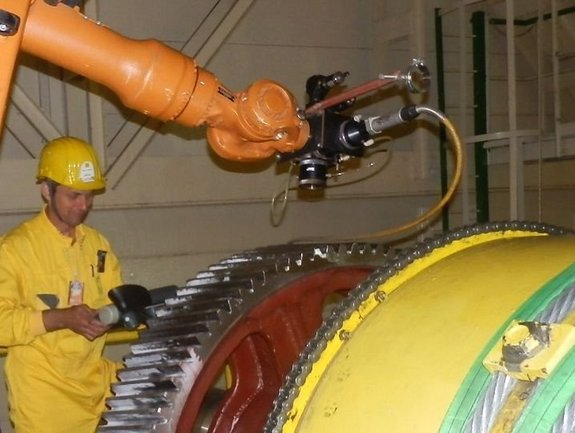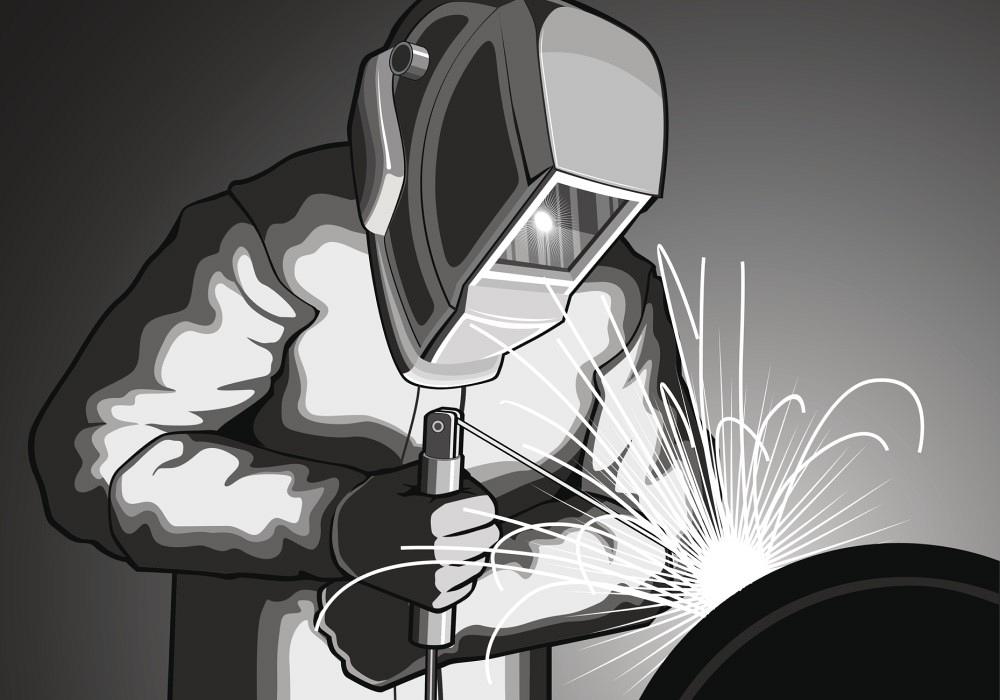Everything about Welding: Key Insights Into Techniques and Best Practices for Success
Welding incorporates a range of methods, each fit for details materials and applications. Comprehending these techniques, such as GMAW, SMAW, and TIG, is essential for accomplishing excellent results. The right tools and safety and security methods can not be overlooked. As prep work and repairing play critical roles in the welding process, grasping these aspects can significantly enhance the high quality of the end product. What are the essential variables that assure a successful weld?
Recognizing Various Welding Methods
Welding strategies incorporate a range of approaches, each suited to particular applications and products. Among one of the most usual methods are Gas Metal Arc Welding (GMAW), Protected Metal Arc Welding (SMAW), and Tungsten Inert Gas Welding (TIG) GMAW, likewise called MIG welding, is prominent for its rate and versatility, making it ideal for slim materials. SMAW, or stick welding, is preferred for its simplicity and efficiency in outdoor settings, specifically with thicker steels. TIG welding provides precision and control, making it appropriate for intricate work and non-ferrous metals (Belgrade Fabrication). Each strategy has its unique benefits and factors to consider, enabling welders to select the very best technique based upon the task's requirements, material type, and preferred outcomes. Recognizing these methods is important for effective welding
Important Welding Equipment and Tools
While numerous welding methods need specific skills, the ideal equipment and tools are just as vital for attaining quality results. Vital welding equipment includes welding devices, which vary depending upon the method-- such as MIG, TIG, or stick welding. Safety equipment, consisting of headgears, handwear covers, and aprons, warranties security and comfort during the procedure. On top of that, fixtures and clamps aid protect materials in area, guaranteeing precision in welds. Consumables like welding rods, cord, and securing gas are also crucial elements that affect the quality of the weld. Additionally, tools such as mills and cutters promote surface area preparation and post-weld ending up, adding to a professional outcome. Purchasing premium equipment inevitably improves the performance and efficiency of welding projects.
Security Practices in Welding
Proper safety and security methods are essential in the welding market to protect employees from prospective dangers. Welders should use appropriate individual safety tools (PPE), consisting of helmets with correct shading, handwear covers, and flame-resistant clothing. Ample ventilation is crucial to reduce exposure to harmful fumes and gases generated during the welding procedure. Additionally, employees should be learnt the right handling of welding devices to stop accidents. Fire security actions, such as keeping flammable products far from the welding area and having fire extinguishers conveniently available, are essential. Regular assessments of devices and work areas can assist determine potential dangers prior to they bring about mishaps. By sticking to these safety and security practices, welders can produce a much safer working atmosphere and decrease dangers connected with their trade.
Preparing Products for Welding
Preparing products for welding is an important step that substantially affects the quality and stability of the end product (Belgrade Welding). Correct prep work entails cleansing the surface areas to eliminate impurities such as oil, dust, and corrosion, which can jeopardize the weld. Strategies such as grinding, sanding, or utilizing solvents are frequently employed to attain a clean surface area. Furthermore, making sure that the materials mesh snugly is necessary; voids can cause weak welds. It's likewise important to think about the positioning and positioning of the parts, as this will influence the convenience of welding and the last result. Lastly, selecting the appropriate filler product and making certain compatibility with the base metals is necessary for accomplishing solid, long lasting welds
Tips for Achieving High-Quality Welds
Attaining top notch welds needs interest to information and adherence to best methods throughout the welding procedure. Appropriate joint prep work is necessary, making sure surfaces are clean and totally free from pollutants. Choosing the ideal filler product and welding technique based upon the base metals is important for ideal bonding. Preserving constant traveling speed and angle while welding can protect against issues and promote uniformity. Furthermore, managing warm input is crucial; too much warmth can result in bending and compromised joints. Routinely examining the welds during the process allows for prompt modifications if needed. Using ideal post-weld therapies, such as cleaning and anxiety relief, can improve the resilience and honesty of the weld, eventually making sure a successful end result.
Fixing Usual Welding Issues
Welding usually presents difficulties that can influence the top quality and stability like it of the final item. Common issues such as porosity, irregular weld grains, and getting too hot can arise, each calling for specific troubleshooting strategies. Comprehending these troubles is essential for welders to improve their abilities and accomplish suitable results.
Porosity Issues Clarified
Porosity can typically be ignored, it continues to be an essential issue in welding that can endanger the honesty of a finished item. Porosity refers to the existence of tiny gas pockets within the weld grain, which can deteriorate the joint and lead to premature failing. This trouble commonly occurs from pollutants, dampness, or incorrect securing gas protection during the welding process. To minimize porosity, welders ought to validate that the base materials are tidy and completely dry, use ideal shielding gases, and preserve constant welding specifications. Frequently examining the equipment and setting can additionally aid determine possible problems before they materialize in the weld. Attending to porosity properly is essential for achieving strong, resilient welds that meet high quality requirements.

Irregular Weld Beads
Inconsistent weld beads can significantly impact the top quality and stamina of a finished product. Various variables add to this issue, consisting of incorrect traveling speed, wrong amperage settings, and inconsistent electrode angles. When the welder moves as well swiftly, a bead might appear narrow and lack penetration, while relocating also slowly can cause excessive build-up. In addition, using the incorrect amperage can result in either undercutting or extreme spatter, both of which concession weld integrity. The welder's strategy, such as irregular torch motion, can also lead to irregular bead look. To mitigate these problems, welders should concentrate on preserving consistent, regulated activities and making sure correct equipment settings to accomplish uniformity in their welds. Consistency is essential to attaining solid and trusted welds.
Overheating and Warping Issues
Extreme warm during the welding process can lead to substantial getting too hot and warping concerns, influencing the structural stability of the workpiece. These problems usually show up as distortion, which can compromise placement and fit-up, making additional setting up challenging. Elements adding to overheating consist of the choice of welding parameters, such as voltage and take a trip rate, in addition to the kind of product being welded. To alleviate these concerns, welders should preserve constant traveling speed and suitable heat input while checking the workpiece temperature. In addition, preheating or post-weld warmth therapy can assist minimize tensions triggered by rapid cooling - Belgrade Fabrication. Routine assessment and adherence to finest methods are essential in stopping overheating and ensuring the durability and reliability of bonded structures
Frequently Asked Inquiries
What Are the Job Opportunities in the Welding Market?
The welding industry provides varied job chances, including placements as welders, designers, examiners, and instructors. Specialists can operate in production, construction, aerospace, and auto industries, benefiting from strong demand and affordable wages in numerous duties.
How Can I Boost My Welding Rate Without Sacrificing Quality?
To boost welding rate without sacrificing quality, one must practice efficient techniques, preserve devices, maximize settings, and enhance hand-eye sychronisation. Regular training and seeking comments can additionally considerably add to attaining faster, top notch welds.
What Qualifications Are Offered for Welders?
Many certifications exist for welders, including those from the American Welding Culture (AWS), the National Center for Construction Education And Learning and Study (NCCER), and different industry-specific organizations. These qualifications enhance employability and show ability proficiency.
Just How Does Welding Impact the Features of Metals?
Welding influences the buildings of steels by altering their microstructure, which can result in modifications in toughness, ductility, and solidity. Warm input and cooling rates during the procedure greatly affect these material attributes.
Can I Weld Dissimilar Metals With Each Other?
